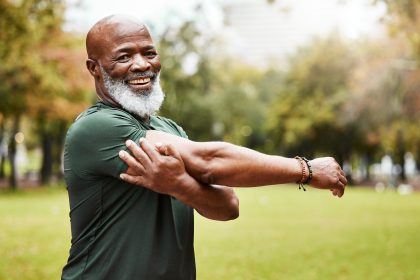Mobility training represents a sophisticated approach to movement enhancement, distinct from traditional stretching routines. This practice emphasizes active engagement of muscles and joints, creating a foundation for improved physical performance in both daily activities and athletic pursuits. Unlike static stretching, mobility exercises involve controlled, dynamic movements that improve coordination and joint health.
This method strengthens the connective tissues surrounding joints, ensuring they remain resilient under stress. Over time, mobility work reduces stiffness and discomfort, making movement more effortless and fluid. It also plays a significant role in functional strength, helping individuals maintain proper posture and perform tasks with greater efficiency.
Scientific foundations of movement
Research demonstrates that mobility training affects multiple aspects of physical function. The body’s proprioceptive system, responsible for spatial awareness and movement control, strengthens through regular mobility practice. This enhancement leads to improved balance, coordination, and overall movement efficiency.
Mobility training rewires the nervous system to optimize movement patterns. As the body adapts to controlled, dynamic motions, it becomes better at responding to different physical demands. Athletes and fitness enthusiasts benefit from faster reaction times, while everyday activities such as bending, lifting, and walking feel smoother and more natural.
Progressive movement development
Effective mobility training follows a systematic progression, building from fundamental movements to more complex patterns. This approach ensures the body adapts gradually, reducing the risk of overuse injuries while improving movement efficiency.
The process starts with isolated joint movements, such as controlled shoulder rotations or ankle circles, before progressing to compound exercises like deep squats and hip openers. These movements mimic real-world actions, making it easier to transfer improved mobility into daily life. Strength and flexibility develop in tandem, preventing imbalances that could lead to discomfort or injury.
Aging and movement preservation
Mobility training is essential for preserving movement as the body ages. As muscles tighten and joints lose their range of motion, everyday activities such as reaching overhead or bending down become more challenging. Regular mobility work counters these natural effects of aging, helping individuals maintain independence and an active lifestyle.
Joint function benefits significantly from continuous movement training. This reduces stiffness, keeps muscles engaged, and improves circulation, preventing the deterioration associated with prolonged inactivity. Older adults who prioritize mobility exercises often experience fewer falls, better balance, and increased confidence in their movements.
Beyond physical benefits, mobility training has cognitive and emotional advantages. Engaging in movement-focused exercises strengthens the mind-body connection, reinforcing spatial awareness and reducing hesitation in movement. This can alleviate anxiety about falling or sustaining injuries, creating a greater sense of control over one’s body.
Integration into daily practice
Incorporating mobility training into a daily routine ensures long-term physical benefits. Many people neglect mobility work because it lacks the immediate intensity of weight training or cardio, but its impact on movement quality makes it indispensable.
The most effective way to develop consistency is by integrating mobility exercises into warm-ups or cooldowns. For instance, a few minutes of deep lunges, spinal twists, and hip mobility drills before a workout can prepare the body for physical exertion. Similarly, dedicating a short period to mobility work after prolonged sitting can counteract stiffness and improve circulation.
The foundation for lifelong movement
Mobility training is an investment in long-term physical wellness. While it may not be as widely emphasized as strength or endurance training, its benefits extend far beyond improving flexibility. By incorporating targeted movement exercises, individuals can build a resilient body that moves efficiently, resists injury, and supports an active lifestyle well into old age.
Understanding and implementing mobility training principles offers a foundation for sustained physical health. Whether incorporated into a structured fitness plan or woven into daily movement habits, mobility work ensures that the body remains adaptable, strong, and capable through all stages of life.














